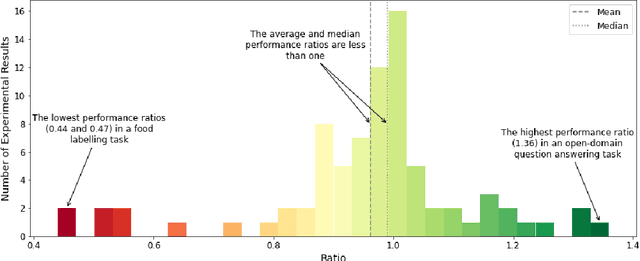Thomas W. Malone
Supermind Ideator: Exploring generative AI to support creative problem-solving
Nov 03, 2023Abstract:Previous efforts to support creative problem-solving have included (a) techniques (such as brainstorming and design thinking) to stimulate creative ideas, and (b) software tools to record and share these ideas. Now, generative AI technologies can suggest new ideas that might never have occurred to the users, and users can then select from these ideas or use them to stimulate even more ideas. Here, we describe such a system, Supermind Ideator. The system uses a large language model (GPT 3.5) and adds prompting, fine tuning, and a user interface specifically designed to help people use creative problem-solving techniques. Some of these techniques can be applied to any problem; others are specifically intended to help generate innovative ideas about how to design groups of people and/or computers ("superminds"). We also describe our early experiences with using this system and suggest ways it could be extended to support additional techniques for other specific problem-solving domains.
A Test for Evaluating Performance in Human-Computer Systems
Jun 28, 2022



Abstract:The Turing test for comparing computer performance to that of humans is well known, but, surprisingly, there is no widely used test for comparing how much better human-computer systems perform relative to humans alone, computers alone, or other baselines. Here, we show how to perform such a test using the ratio of means as a measure of effect size. Then we demonstrate the use of this test in three ways. First, in an analysis of 79 recently published experimental results, we find that, surprisingly, over half of the studies find a decrease in performance, the mean and median ratios of performance improvement are both approximately 1 (corresponding to no improvement at all), and the maximum ratio is 1.36 (a 36% improvement). Second, we experimentally investigate whether a higher performance improvement ratio is obtained when 100 human programmers generate software using GPT-3, a massive, state-of-the-art AI system. In this case, we find a speed improvement ratio of 1.27 (a 27% improvement). Finally, we find that 50 human non-programmers using GPT-3 can perform the task about as well as--and less expensively than--the human programmers. In this case, neither the non-programmers nor the computer would have been able to perform the task alone, so this is an example of a very strong form of human-computer synergy.
 Add to Chrome
Add to Chrome Add to Firefox
Add to Firefox Add to Edge
Add to Edge